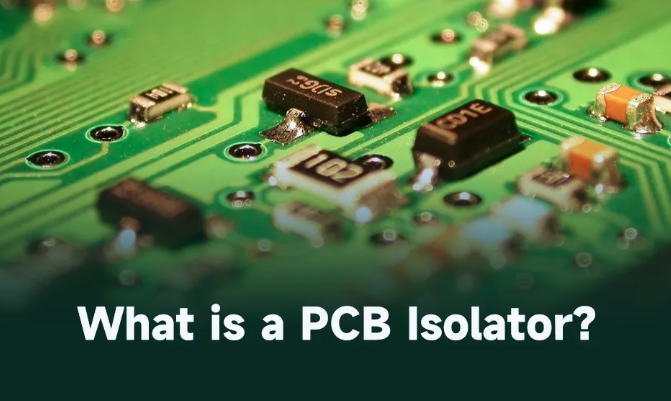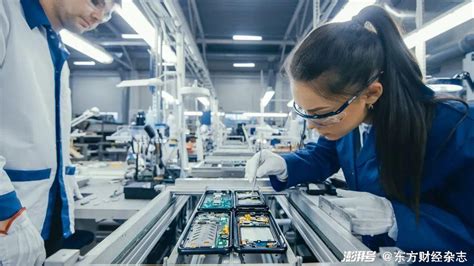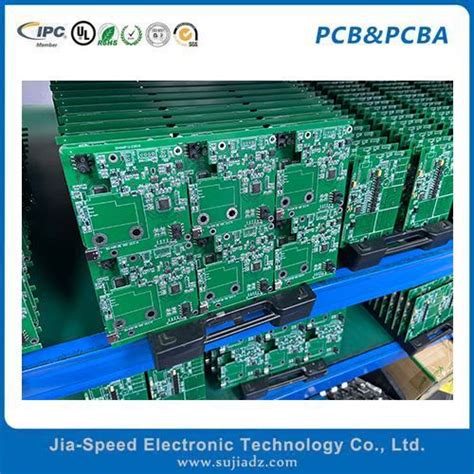Signal Isolation Technology for PCBs
Signal isolation allows digital or analog signals to be transmitted without a galvanic connection across the barrier between the transmitter and receiver. This allows the ground or reference voltages outside the transmitter and receiver to differ by as much as several thousand volts and prevents loop currents between different ground potentials that could damage the signal. Noise on the signal ground can corrupt the signal. Isolation separates the signal to a clean signal subsystem ground. In another application, a galvanic connection between reference voltages can create an unsafe current path for operators or patients. The nature of the signal can indicate to the circuit designer the appropriate ICs to consider for the system.
The first type of isolation device relied on the absence of a transmitter and receiver across the isolation barrier. This device was once used for digital signals, but linearity issues forced analog signal isolation to use transformers, using a modulated carrier to carry the analog signal across the barrier. Transformers are inherently difficult to fabricate and often impossible to fabricate into ICs, so capacitor circuits were developed to couple the modulated signal across the barrier. High-slew rate transient voltages acting on the isolation barrier can act as signals to a single-capacitor barrier device, leading to the development of dual-capacitor differential circuits to minimize errors. Capacitive barrier technology is now used in both digital and analog isolation devices.
1.Isolating Serial Data Streams
There are a wide range of options for isolating digital signals. If the data stream is bit-serial, options range from simple optocouplers to isolated transceiver ICs. Key design considerations include:
- Required data rate
- Power requirements on the isolated side of the system
- Whether the data channel must be bidirectional
LED-based optocouplers were the first technology used to address isolation design problems. Several LED-based ICs are now available with data rates of 10 Mbps and above. A key design consideration is that LED light output decreases over time. Therefore, in the early stages, excess current must be supplied to the LED to ensure sufficient output light intensity over time. Because the power available on the isolated side may be limited, this excess current requirement is a significant issue. Because the drive current required by LEDs can exceed that available from simple logic output stages, specialized drive circuits are often required.
For high-speed applications and when the data stream is reversed under logic control, the Burr-Brown ISO150 digital coupler can be used. Figure 1 shows a bidirectional application circuit for the ISO150. Channel 1 controls the direction of transmission for Channel 2 and is configured to transmit from Terminal A to Terminal B. The signal applied to the DIA pin determines the direction of the signal flow. A high level applied to Terminal B places that side of Channel 2 in receive mode. A low level applied to the Mode pin on Terminal A of Channel 2 places the channel in transmit mode. The direction signal is present on both sides of the isolation barrier. This circuit can operate at data rates up to 80 MHz.
A second variant of bit-serial communication is the evolving differential bus system. These systems are described by the RS-422, RS-485, and CANbus standards. While some systems fortunately have a common ground, many have nodes at different potentials. This is especially true when the two nodes are separated by a considerable distance. Burr-Brown’s ISO 422 is an integrated full-duplex isolated transceiver designed for these applications. This transceiver can be configured in both half-duplex and full-duplex modes (see Figure 2). Transmission rates can reach 2.5 Mbps. This device even includes a loop-back test function, allowing each node to perform a self-test. During this mode, data on the bus is ignored.

2.Isolating Parallel Data Bus Systems
Isolating a parallel digital data bus imposes three additional design parameters:
- Bus bit width
- Allowable skew
- Clock speed requirements
This task can be accomplished using a bank of optocouplers, but the supporting circuitry can be complex. Propagation time mismatches between optocouplers can cause data skew, leading to data errors at the receiver. To minimize this problem, the ISO508 isolated digital coupler (Figure 3) supports double-buffered data buffers at both the input and output sides. This configuration transmits data at a rate of 2 MBps.
The ISO508 has two operating modes. When the CONT pin is low, data is transmitted across the barrier in a synchronous pattern, controlled by the LE1 signal. When LE1 is high, data is transferred from the input pins to the input latches. When LE1 goes low, the data byte begins transmission across the barrier. During this time, the input pins are available for the next data byte. In this mode, data rates up to 2 MBps can be transmitted.
When the CONT pin is set high, data is sent across the barrier under the control of the device’s internal 20 MHz clock. Data transmission is asynchronous to the external latch enable signal. Data is serially strobed from the input latches to the output latches. After a byte is transmitted, the entire byte is shifted into the output latches, which de-skew the transmitted data byte. For a full 8-bit byte, the propagation delay is less than 1 ms.
3.Analog Signal Isolation
In many systems, analog signals must be isolated. Analog signals require circuit parameters that are significantly different from those considered for digital signals. Analog signals typically prioritize:
- Accuracy or linearity
- Frequency response
- Noise considerations
Power requirements, especially for the input stage, should also be considered. The basic accuracy or linearity of an isolation amplifier cannot be improved by using the corresponding application circuitry, but these circuits can reduce noise and lower the input stage power requirements.
The Burr-Brown ISO124 simplifies analog isolation. The input signal is duty-cycle modulated and digitally transmitted across the barrier. The output stage receives the modulated signal, converts it back to an analog voltage, and removes the ripple inherent in the modulation/demodulation process. Due to the modulation and demodulation of the input signal, certain limitations of sampled data systems must be adhered to. The modulator operates at a 500kHz fundamental frequency, so input signals above the 250kHz Ngquist frequency appear as lower-frequency components in the output.
Although the output stage removes most of the carrier frequency from the output signal, some carrier signal still remains. Figure 4 shows a combined filtering approach to reduce high-frequency noise contamination in the rest of the system. The power supply filter significantly reduces noise ingress from the power supply pins. The output filter is a two-pole Sallen-Key stage with a Q of 1 and a 3dB frequency of 50kHz. This reduces output ripple by a factor of five.
Another issue with isolation voltage is the power required by the input stage. The output stage is typically referenced to chassis or ground, while the input typically floats at another potential. Therefore, the input stage’s power supply must also be isolated. Typically, a single power supply is used, rather than the ideal +15V and -15V supplies.
Figure 5 shows how a single voltage supply combined with the 1NA2132 dual differential amplifier at the ISO124 input stage can boost the input signal level to the full range. The only requirement is that the input supply voltage remain greater than 9V, which is required by the ISO124 input voltage.
The lower half of the INA2132 generates an output voltage equal to half the VS+ supply. This voltage serves as the REF pin for the other half of the INA2132 and the GND input of the ISO124, a pseudo ground. The differential input signal to the INA2132 can swing above or below the new reference level. The ISO124 output, like the input, will be fully bipolar.
4.Multifunction ICs for Isolation
New multifunction data acquisition ICs offer designers the opportunity to perform multiple tasks across isolation barriers. A complete data acquisition device can include multiple analog switches, a programmable gain instrumentation amplifier, an A/D converter, and one or more digital I/O channels. All of these functions are controlled via a serial data port. The Burr-Brown ADS7870 is one such device. The ADS7870 works well with the ISO150 and is shown in Figure 6.
In this application, each programmable function of the ADS7870 is under the control of the host microprocessor, which itself is controlled by writing commands to registers via the serial communication port. Control features include:
- Multiplexer selection
- Four differential channels or eight single-ended channels
- Programmable instrumentation amplifier gain setting from 1 to 20
- Initialization of the 12-bit A/D converter
The device’s four digital I/O lines are also useful and can be individually configured to report the status of a digital signal or output a digital signal. This allows for the isolation of certain support functions, such as level or error flag readout, from the same ISO150 expansion signal multiplexer.
Conclusion
There are many devices available to designers for use in designs where the ground potentials vary significantly. Each device is designed for unique system requirements. The high level of performance integration of the new devices is a key advantage.







